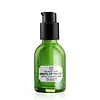What's inside
What's inside
 Key Ingredients
Key Ingredients

 Benefits
Benefits

 Concerns
Concerns

 Ingredients Side-by-side
Ingredients Side-by-side

Water
Skin ConditioningGlycerin
HumectantNiacinamide
SmoothingLactic Acid
BufferingSodium Hydroxide
BufferingSalicylic Acid
MaskingZinc PCA
HumectantAloe Barbadensis Leaf Juice
Skin ConditioningButylene Glycol
HumectantChlorphenesin
AntimicrobialSodium Hyaluronate
HumectantTrisodium Ethylenediamine Disuccinate
Alteromonas Ferment Extract
Skin ConditioningCitric Acid
BufferingPotassium Sorbate
PreservativeSodium Benzoate
MaskingWater
Skin ConditioningButylene Glycol
HumectantOctocrylene
UV AbsorberEthylhexyl Salicylate
UV AbsorberGlycine Soja Oil
EmollientC12-15 Alkyl Benzoate
AntimicrobialDimethicone
EmollientGlycerin
HumectantButyl Methoxydibenzoylmethane
UV AbsorberPentylene Glycol
Skin ConditioningPolyglyceryl-2 Stearate
EmulsifyingPEG-8 Stearate
EmulsifyingCetyl Alcohol
EmollientDisodium Stearoyl Glutamate
CleansingPhenoxyethanol
PreservativeStearic Acid
CleansingCaprylyl Glycol
EmollientPalmitic Acid
EmollientParfum
MaskingPentaerythrityl Tetra-Di-T-Butyl Hydroxyhydrocinnamate
AntioxidantLinalool
PerfumingAdenosine
Skin ConditioningCitronellol
PerfumingMyristic Acid
CleansingSpiraea Ulmaria Extract
AstringentSodium Hyaluronate
HumectantOrbignya Oleifera Seed Oil
EmollientBuddleja Davidii Extract
Skin ConditioningThymus Vulgaris Flower/Leaf Extract
MaskingLimonene
PerfumingBenzyl Alcohol
PerfumingCrithmum Maritimum Extract
Skin ConditioningEryngium Maritimum Extract
TonicCitric Acid
BufferingLeontopodium Alpinum Callus Culture Extract
AntioxidantXanthan Gum
EmulsifyingWater, Butylene Glycol, Octocrylene, Ethylhexyl Salicylate, Glycine Soja Oil, C12-15 Alkyl Benzoate, Dimethicone, Glycerin, Butyl Methoxydibenzoylmethane, Pentylene Glycol, Polyglyceryl-2 Stearate, PEG-8 Stearate, Cetyl Alcohol, Disodium Stearoyl Glutamate, Phenoxyethanol, Stearic Acid, Caprylyl Glycol, Palmitic Acid, Parfum, Pentaerythrityl Tetra-Di-T-Butyl Hydroxyhydrocinnamate, Linalool, Adenosine, Citronellol, Myristic Acid, Spiraea Ulmaria Extract, Sodium Hyaluronate, Orbignya Oleifera Seed Oil, Buddleja Davidii Extract, Thymus Vulgaris Flower/Leaf Extract, Limonene, Benzyl Alcohol, Crithmum Maritimum Extract, Eryngium Maritimum Extract, Citric Acid, Leontopodium Alpinum Callus Culture Extract, Xanthan Gum
 Reviews
Reviews

Ingredients Explained
These ingredients are found in both products.
Ingredients higher up in an ingredient list are typically present in a larger amount.
Butylene Glycol (or BG) is used within cosmetic products for a few different reasons:
Overall, Butylene Glycol is a safe and well-rounded ingredient that works well with other ingredients.
Though this ingredient works well with most skin types, some people with sensitive skin may experience a reaction such as allergic rashes, closed comedones, or itchiness.
Learn more about Butylene GlycolCitric Acid is an alpha hydroxy acid (AHA) naturally found in citrus fruits like oranges, lemons, and limes.
Like other AHAs, citric acid can exfoliate skin by breaking down the bonds that hold dead skin cells together. This helps reveal smoother and brighter skin underneath.
However, this exfoliating effect only happens at high concentrations (20%) which can be hard to find in cosmetic products.
Due to this, citric acid is usually included in small amounts as a pH adjuster. This helps keep products slightly more acidic and compatible with skin's natural pH.
In skincare formulas, citric acid can:
While it can provide some skin benefits, research shows lactic acid and glycolic acid are generally more effective and less irritating exfoliants.
Most citric acid used in skincare today is made by fermenting sugars (usually from molasses). This synthetic version is identical to the natural citrus form but easier to stabilize and use in formulations.
Read more about some other popular AHA's here:
Learn more about Citric AcidGlycerin is already naturally found in your skin. It helps moisturize and protect your skin.
A study from 2016 found glycerin to be more effective as a humectant than AHAs and hyaluronic acid.
As a humectant, it helps the skin stay hydrated by pulling moisture to your skin. The low molecular weight of glycerin allows it to pull moisture into the deeper layers of your skin.
Hydrated skin improves your skin barrier; Your skin barrier helps protect against irritants and bacteria.
Glycerin has also been found to have antimicrobial and antiviral properties. Due to these properties, glycerin is often used in wound and burn treatments.
In cosmetics, glycerin is usually derived from plants such as soybean or palm. However, it can also be sourced from animals, such as tallow or animal fat.
This ingredient is organic, colorless, odorless, and non-toxic.
Glycerin is the name for this ingredient in American English. British English uses Glycerol/Glycerine.
Learn more about GlycerinSodium Hyaluronate is hyaluronic acid's salt form. It is commonly derived from the sodium salt of hyaluronic acid.
Like hyaluronic acid, it is great at holding water and acts as a humectant. This makes it a great skin hydrating ingredient.
Sodium Hyaluronate is naturally occurring in our bodies and is mostly found in eye fluid and joints.
These are some other common types of Hyaluronic Acid:
Learn more about Sodium HyaluronateWater. It's the most common cosmetic ingredient of all. You'll usually see it at the top of ingredient lists, meaning that it makes up the largest part of the product.
So why is it so popular? Water most often acts as a solvent - this means that it helps dissolve other ingredients into the formulation.
You'll also recognize water as that liquid we all need to stay alive. If you see this, drink a glass of water. Stay hydrated!
Learn more about Water